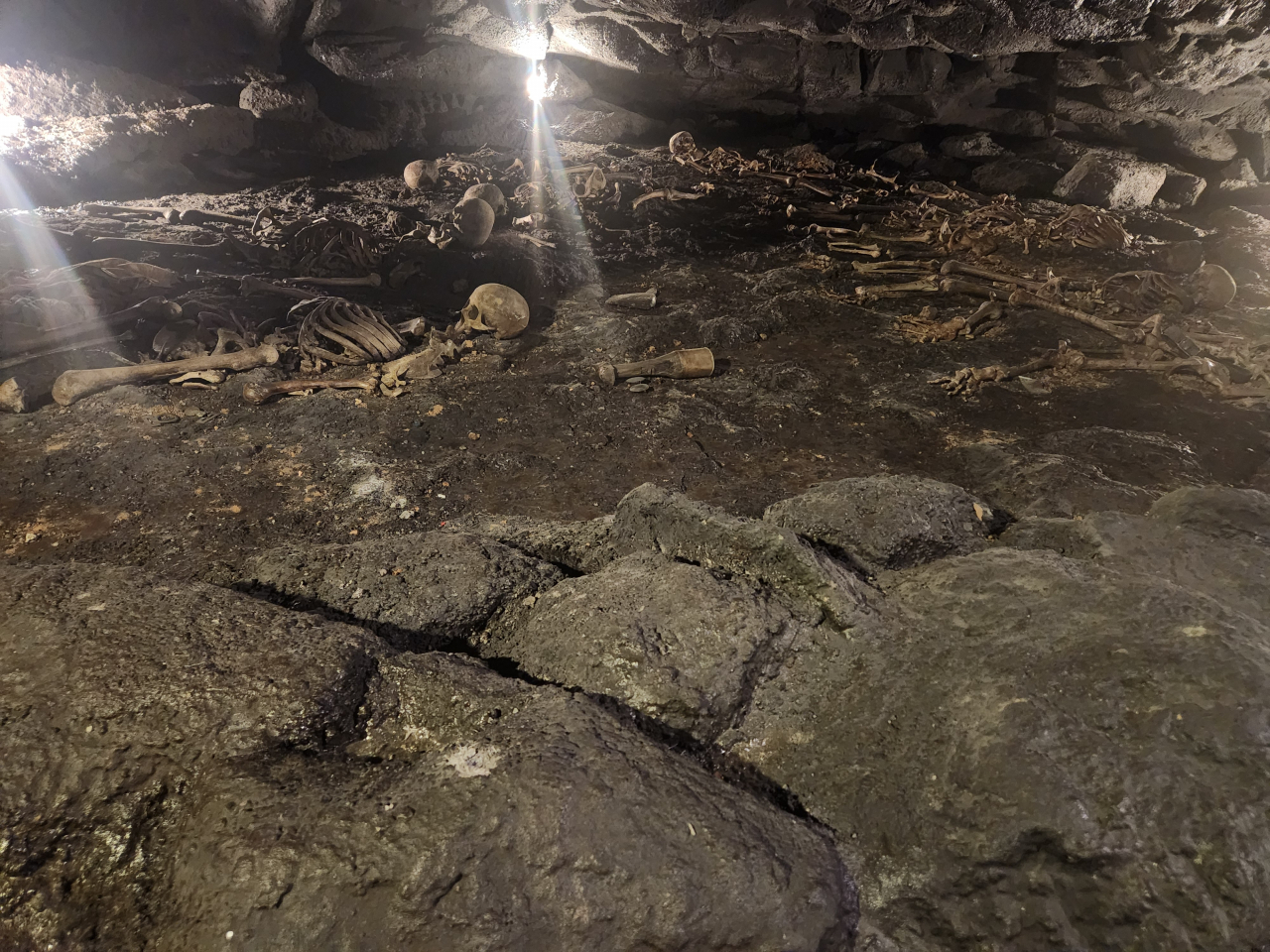
The home of the late Jin A-young sits overlooking the rocky shores at Weolryeong-ri 381, Hanrib-eup in Jeju City, in the west of Jeju Island. The unassuming house, preserved in almost the exact state as it was when Jin died on Sept. 8, 2004, at the age of 90, is about the only earthly remnant of her life, torn apart by the massacres that took place there over half a century ago.
On a table in her home was a dust-covered pack of antacids, one of her daily necessities. Jin had suffered from chronic digestive issues from having no jaw for the last five decades of her life. She lost it on Jan. 12, 1949, when a stray bullet fired by government forces struck her in the face.
The tragic story of the woman nicknamed “Mumyeong-cheon Halmeoni (Cotton Cloth Grandmother),” after a piece of cloth wrapped around her to hide the lower part of her face, is a reminder of what is known as the “April 3 Incident” or the “Jeju Massacres,” which took place between 1947 and 1954. The island-wide crackdown was conducted by the newly liberated Korea’s authorities against what they said were communist collaborators and is considered one of the worst abuses of state power in South Korean history.
Conserving Jin A-young's home as a memorial to the April 3 Incident was part of a joint project by the civic organization and regional government of Jeju Island to commemorate the incident, including the "Jeju Dark Tours: The Unforgettable Past," which takes visitors to major sites related to the tragedy.
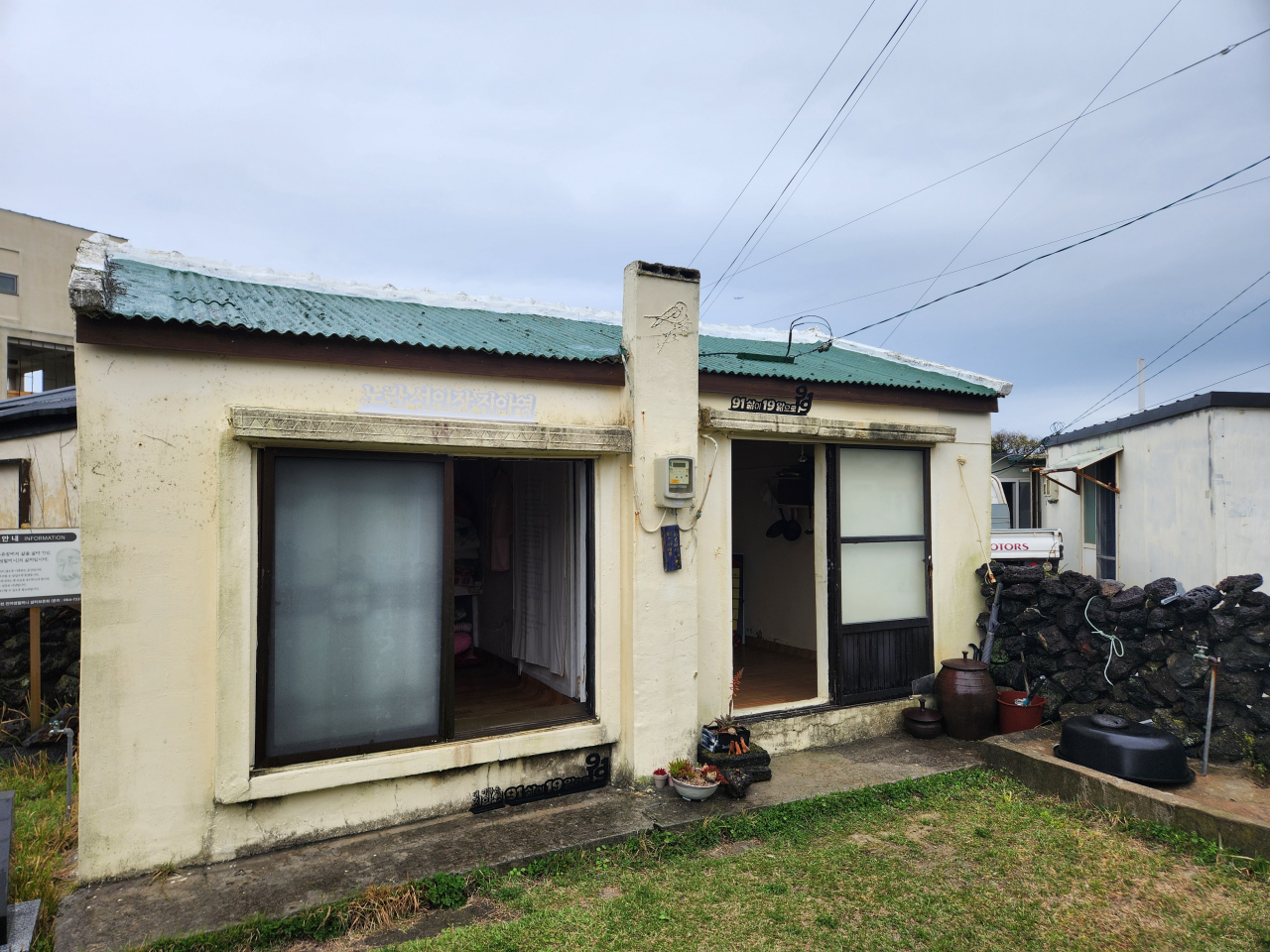
The April 3 Incident occurred on the coattails of Korea’s liberation from Japanese rule, when the country was embroiled in a severe ideological conflict that would eventually rip the peninsula in two. Under the rule of the US Military Government in Korea, the fledgling government of what would later become the Republic of Korea reacted fiercely and mercilessly against anything thought to be associated with communism.
Bloody crackdown, civilian deaths
The Jeju Massacres resulted in thousands of civilian casualties, including many women and children. The authorities labeled the island a "Red Island," and cracked down against not only the communist forces but the civilians, killing or arresting thousands of people on suspicion of aiding the rebels.
At least 14,240 civilians are confirmed to have been killed or gone missing amid the armed revolt by the communist Workers' Party of South Korea against the military-police forces, with actual deaths presumed to be between 25,000 and 30,000, according to the Jeju 4.3 Peace Foundation. Jointly funded by the state and Jeju regional government, the foundation presumes that roughly 10 percent of the island's total population was killed at the time.
Of those killed, 818 were aged 10 or younger.
"The first son of Kim Gye-saeng," "The second son of Kim Gye-saeng," "The third son of Kim Gye-saeng" and "The fourth son of Kim Gye-saeng" are listed among the victims' names inscribed on the memorial tablets placed at the joint altar set up at the Jeju 4.3 Peace Park in Jeju City. The names are absent not because their identities were not confirmed, but because they were too young at the time, so their births had not been reported and they had not yet been named.
At the time, it was customary for Koreans to report childbirth a few years after a child was born due to high child fatality rates.
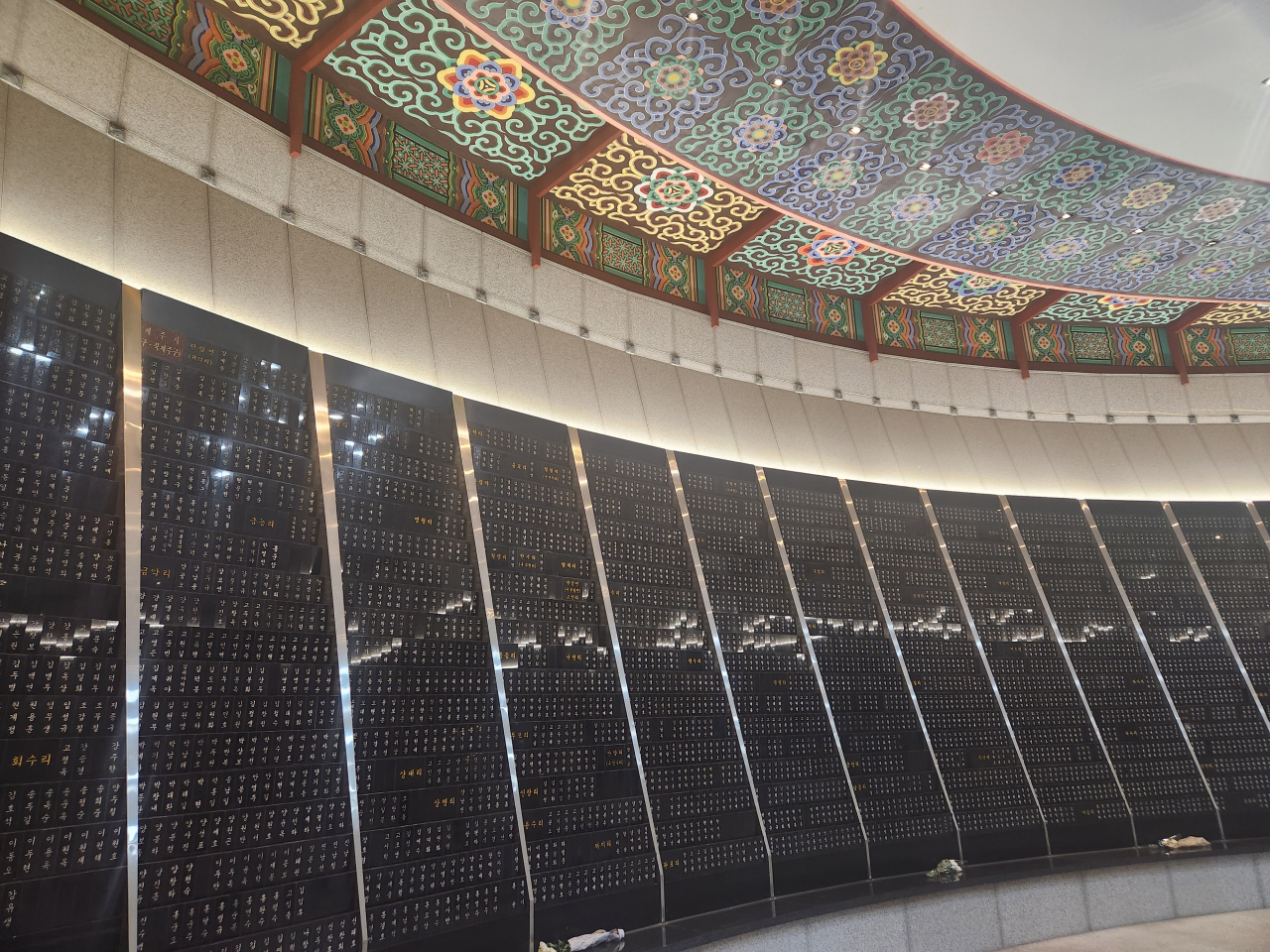
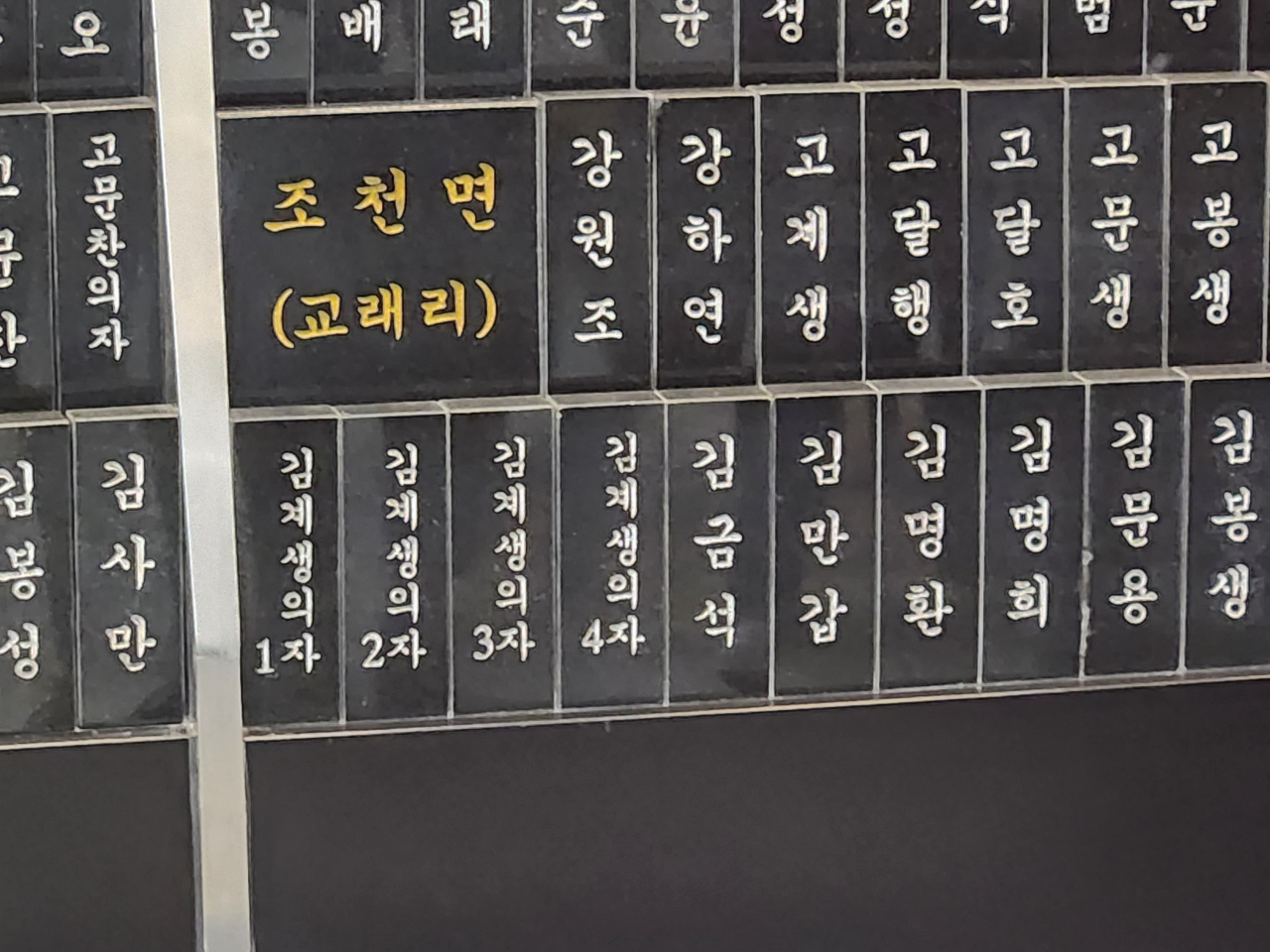
Four thousand empty graves lie beyond the joint altar, dedicated to those whose bodies had never been found. The locations inscribed refer to the places the dead or missing were incarcerated, or where they were killed and their bodies discarded.
The victims of the April 3 Incident extend beyond the 10,562 killed, 3,678 missing, 213 injured for life, and 312 incarcerated. Those who escaped endure emotional, if not physical, scars that were left by the bloodshed.
Memories of massacres
Hong Chun-ho, 85, was a 10-year-old girl when the military came to the small town of Mudengyiwat near Seogwipo City in November 1948. "Police told us to gather at the fields to hear a speech. Some officers told us, 'Don't come out, you'll be killed.' Only about 10 people ended up going. There was no speech. (The police) just shot them," Hong said. "I was at home, and it sounded like thunder. My mother was crying and telling us, 'Your father's at the field right now. We're all dead now.'"
The rest of the locals fled to caves about 200 meters away, where they stayed hidden for 50 days. Some who could not stand the starvation or the cold crept out of the caves and were shot to death by police or soldiers near the Jeongbang Waterfalls.
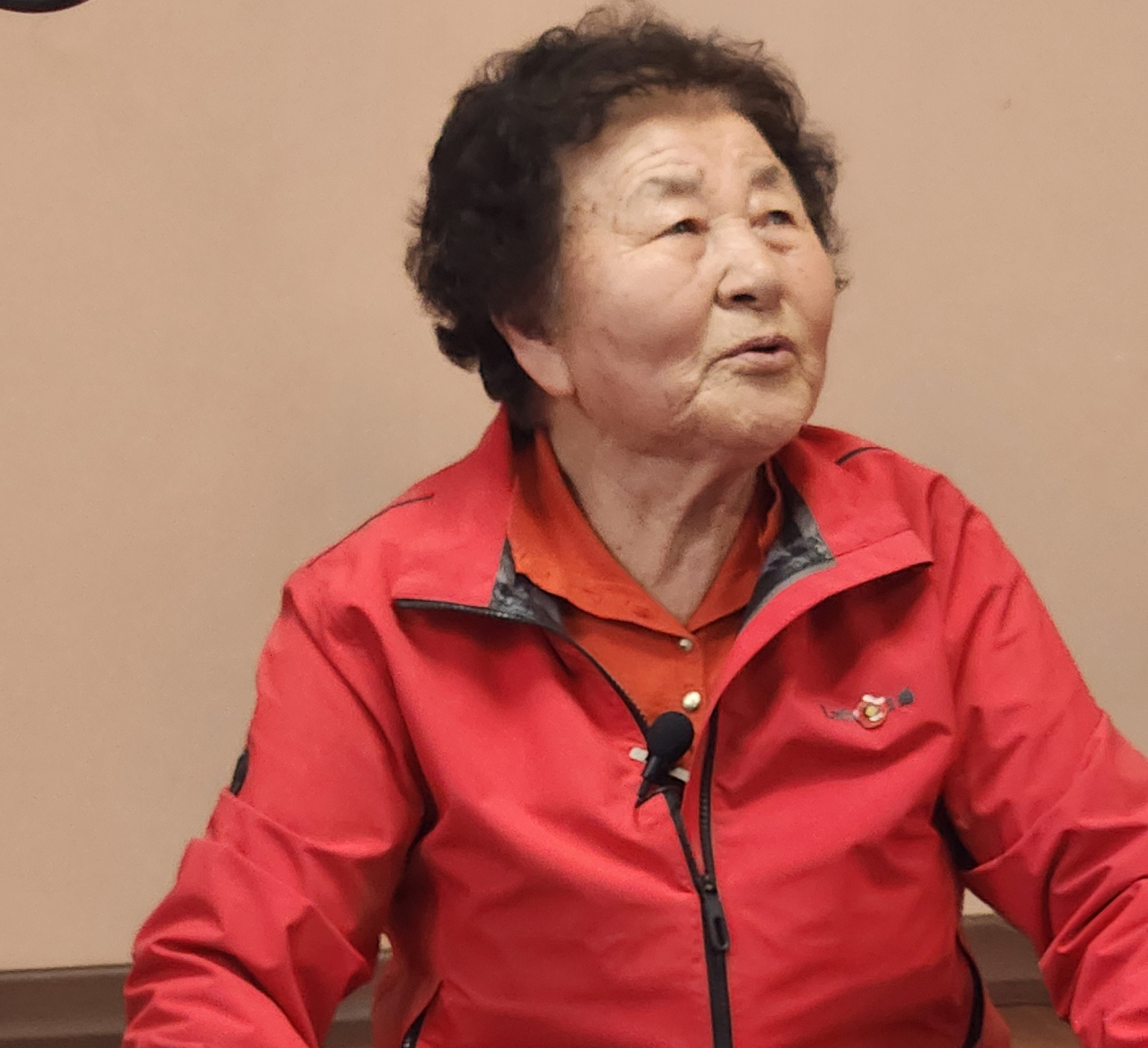
Another well-known massacre site is the Darangshi Cave in the eastern part of Jeju Island, located at Sehwa-ri 2605, Gujwa-eup, Jeju City. It is among the most well-known massacre sites on the island because the complete remains of 11 people were found there in 1992. The victims included three women and one child.
By March 1949, the Hong family had no choice but to come out of the caves. By then, all three of her brothers had starved to death. They were 8, 5and 2 years old.
Hong's father had miraculously survived the initial killings, but his fate would not be much better than those who had been killed on the spot.
"My father was dragged to Seogwipo and was tortured for six months, where they asked him 'What did you do with the rebels? Tell the truth.' Not one year after his release, he was dead," she said. Her mother would eventually pass away shortly afterward.
Mudeungyiwat village once had 130 households, but it no longer exists. All that remains are stone walls that once surrounded the homes.
For half a century, Hong had remained silent, afraid the "commie" label may bring disadvantages for her children. "Nobody could come back to the village. Returning here would be admitting that we were 'commies.'"
Mudeungyiwat is only one of the villages that was abandoned after the tragedy.
Gonul-dong, located at Hwabukil-dong 4429, Jeju City in the northern part of the island, is another village that was obliterated beyond recovery after the April 3 Incident. The town of formerly 70 households was raided by soldiers in January 1949, and the stone walls around the empty lots are the only remnants of what had once been a scenic seaside townlet.
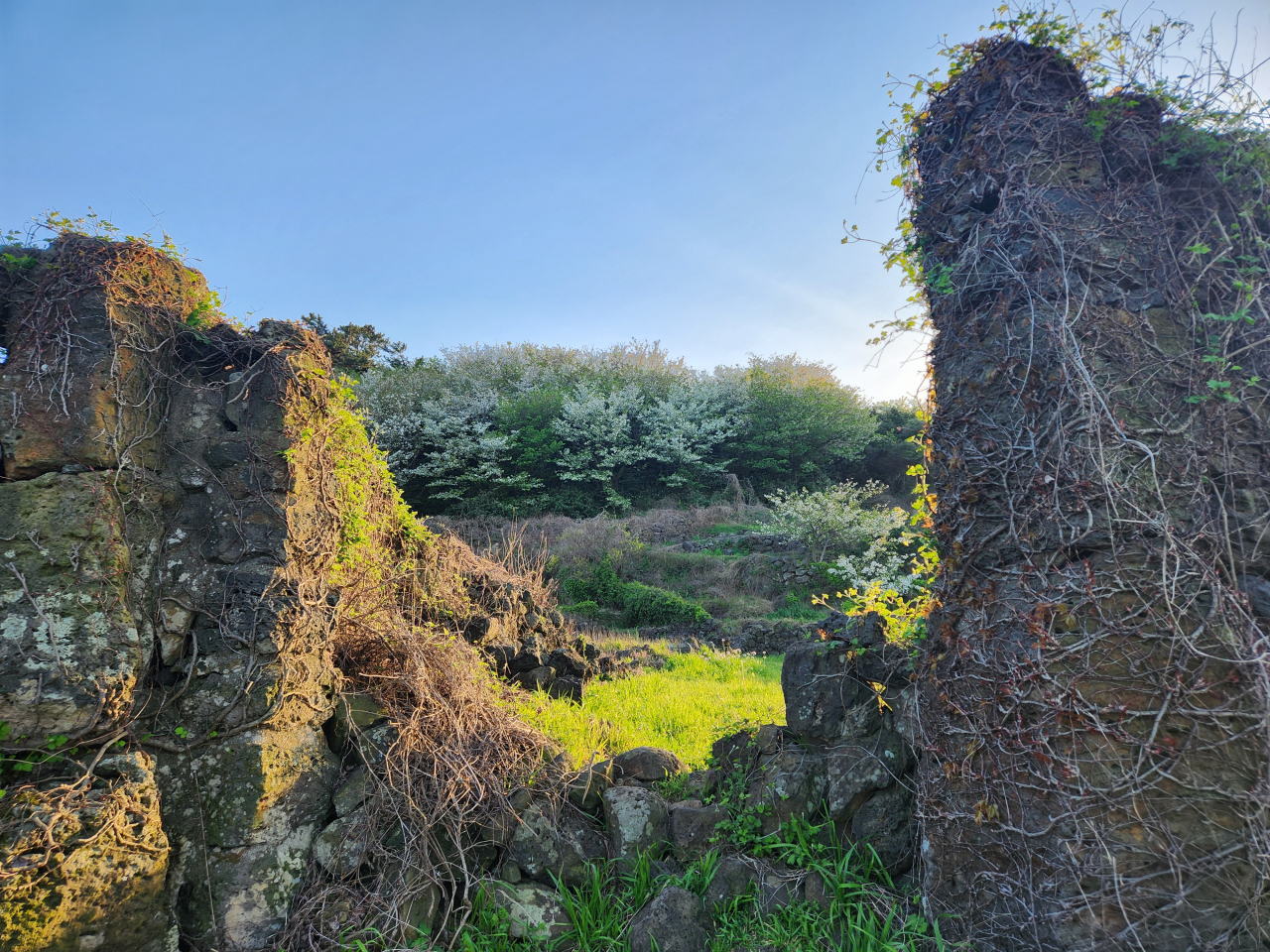
Commemoration
Since 2000, there have been peace offerings made by the government. Under the administration of President Kim Dae-jung, the Special Act on Discovering the Truth on the Jeju April 3 Incident and the Restoration of the Honor of Victims was enacted in 2000 to provide legal grounds for an investigation into the tragedy and to provide compensation for the victims and bereaved families.
Former President Roh Moo-hyun became the first South Korean leader in 2003 to formally apologize for what the government did in the incident, and ex-President Moon Jae-in signed the revision of a special law that specified the amount of compensation for the victims. Moon's pen used to sign the law revision in 2021 can be seen at the Jeju 4.3. Peace Memorial Hall inside the Jeju 4.3 Peace Park, as can Kim's pen used to sign the original law back in 2000.
To this day, Moon and Roh remain the only two South Korean presidents to attend the Jeju April 3 memorial event, held each year at the peace park. Conservative presidents have been reluctant to directly discuss the incident, which occurred under the leadership of the founding President Syngman Rhee, for whom the conservative faction has always shown strong support.
No conservative president has offered an apology for the incident as of yet.
"It would be nice if President Yoon mentioned more about the Jeju April 3 Incident, and said sorry," said Hong.
Around 800 sites connected to the April 3 Incident are scattered across Jeju Island. Information on tour programs related to the massacres can be found in Korean and English at https://www.jejudarktours.org.
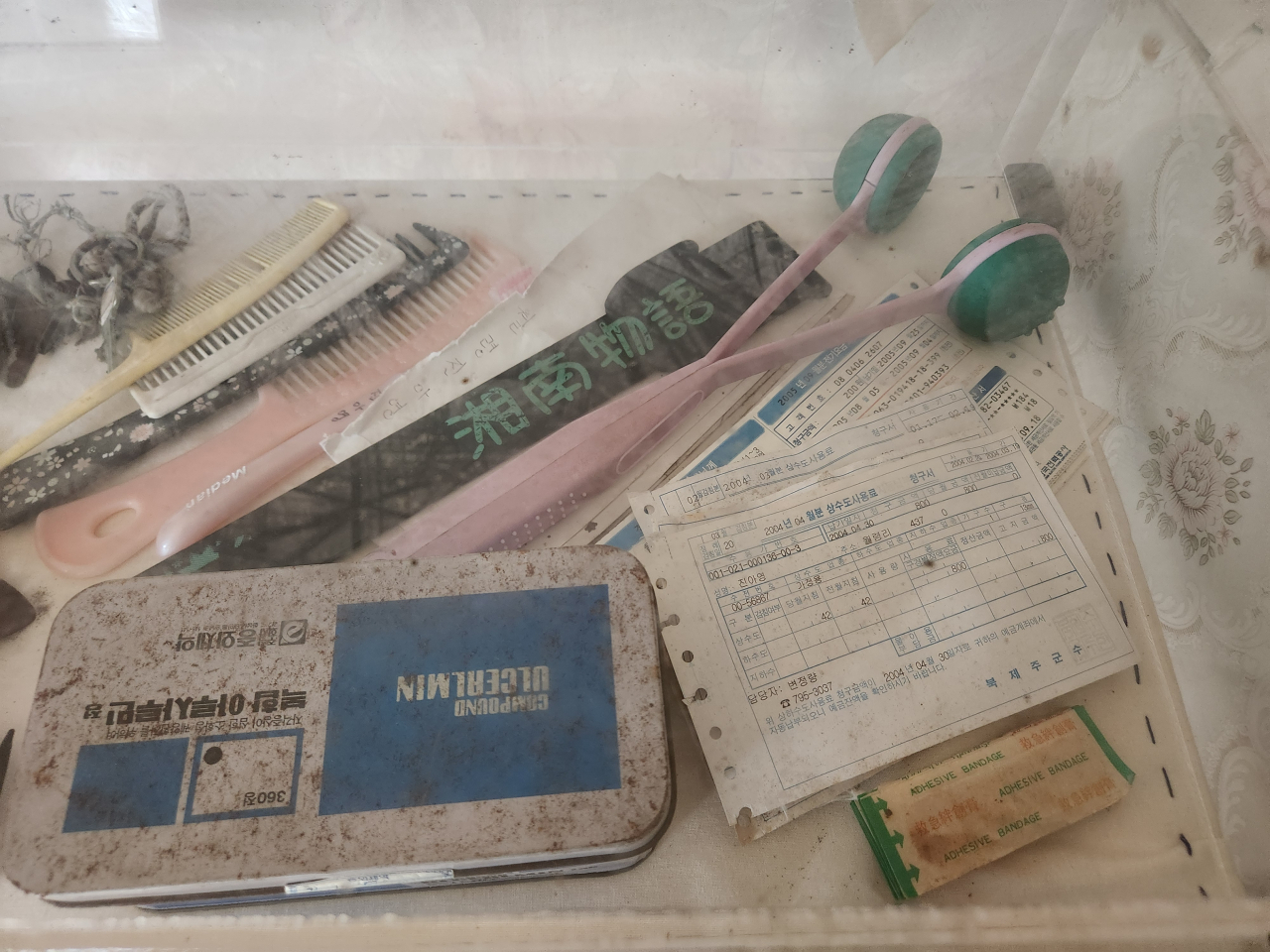


![[KH Explains] No more 'Michael' at Kakao Games](http://res.heraldm.com/phpwas/restmb_idxmake.php?idx=645&simg=/content/image/2024/04/28/20240428050183_0.jpg&u=20240428180321)


![[Grace Kao] Hybe vs. Ador: Inspiration, imitation and plagiarism](http://res.heraldm.com/phpwas/restmb_idxmake.php?idx=645&simg=/content/image/2024/04/28/20240428050220_0.jpg&u=)